Investigation: strange programs in the Register of domestic software
The story of how I tried to transfer the company to Russian software, but found clones of a foreign directly in the registry of domestic software.
Habr, hello! I work as a system administrator in one state structure of the Krasnoyarsk Territory. And although this is quite far from the “decision-making center,” the program for the transition to Russian software has come down to us. A couple of weeks ago, the head at a meeting in the regional administration was made clear that it was no longer possible to purchase foreign software.
We have only 35 computers and they are mainly used as typewriters. Therefore, I had to study the options for the Russian operating system and office suites. In the register of domestic software today there are more than 5700 different programs and there are big problems with the classification there. Only in the section "Operating Systems" there are about 50 solutions, and there are no more than a dozen real OSs there. The rest is various utilities, plug-ins for payment terminals and other similar software. With office suites, it’s even more interesting: the list contains more than 200 solutions. And these are not only large office software packages, but also document management systems, highly specialized applications and many “spare parts” for them.
The Ministry of Communications, you yourself are not confused in it?
We decided on the operating system relatively quickly - we chose Alt 8 . It is easy to learn, and it works stably. It was more difficult with office suites, I spent more than an hour and found only 4 products in the Registry:
Let's go in order. MyOffice: the Buy button is right in the header, but it’s impossible to buy directly from the site. Instead, they are asked to send a request to a partner. There are no demos, you cannot try and evaluate a product without communication with partners. I sent the application, but when they answer and whether they answer, it’s not at all clear.

Move on. P7-Office website : the Download button is right in the header:

But if you click it, then the download does not happen - instead, we again see the request form.

Okay, we send the application, and we have links to download the image.
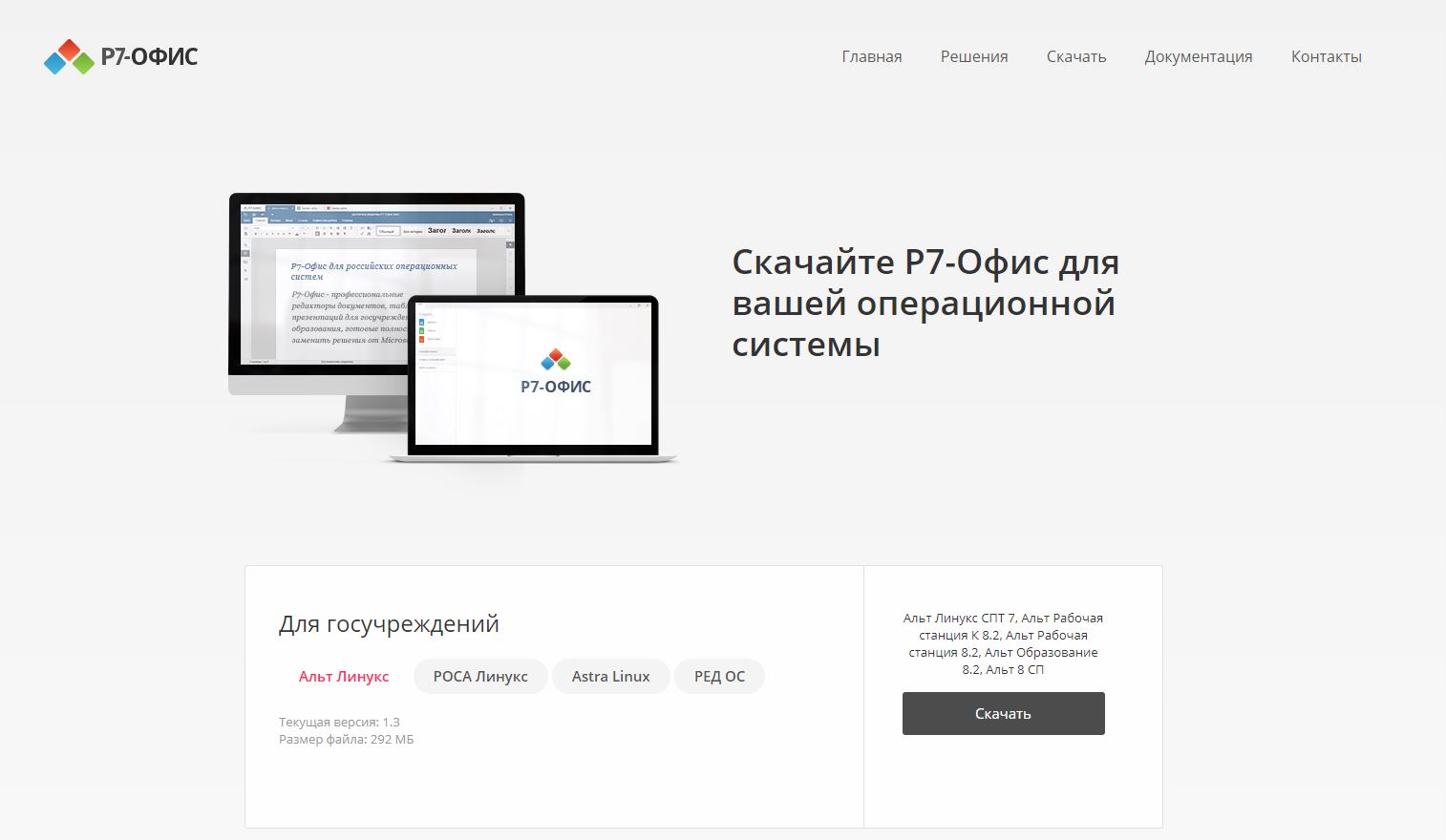
Download, install, run.
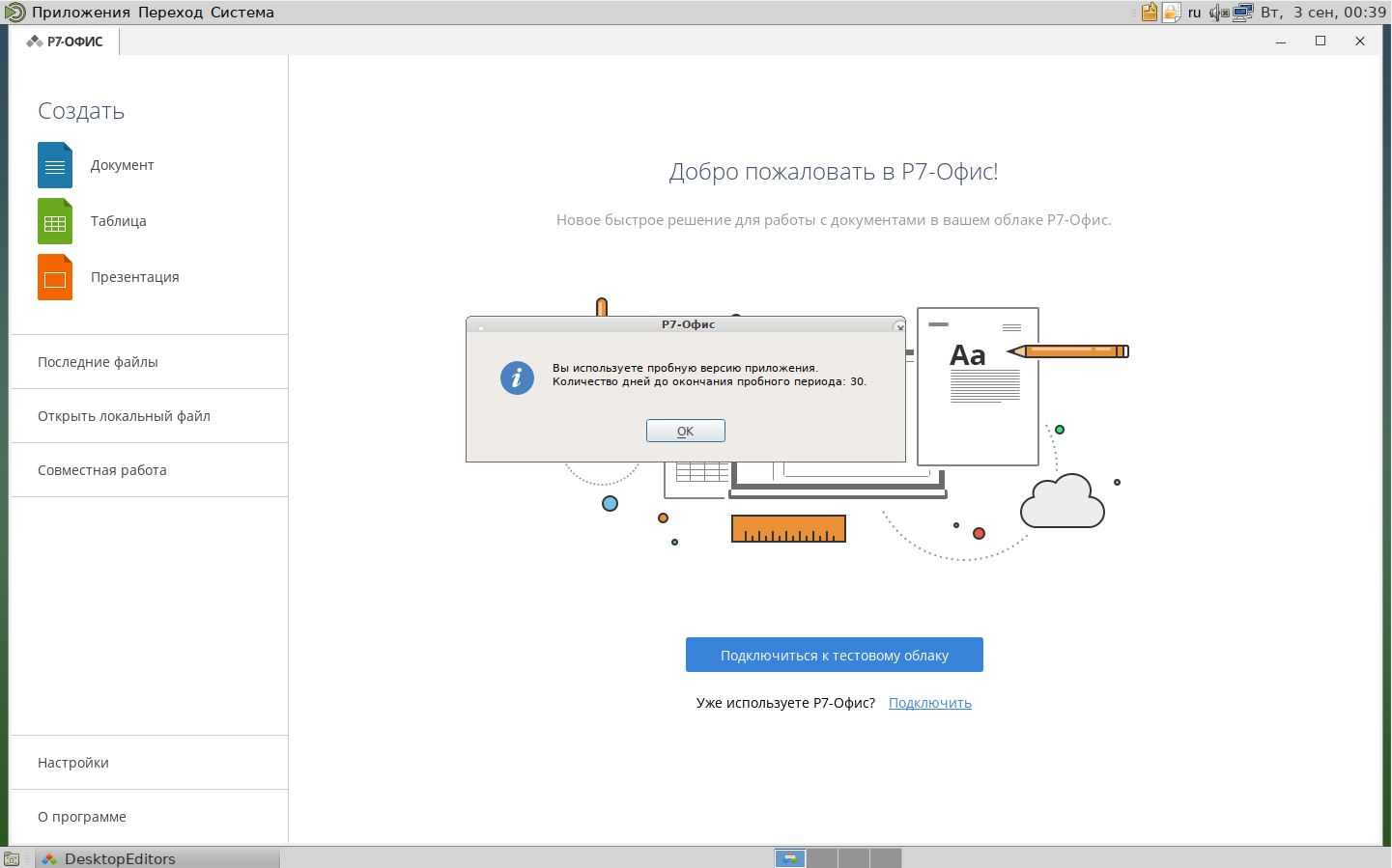
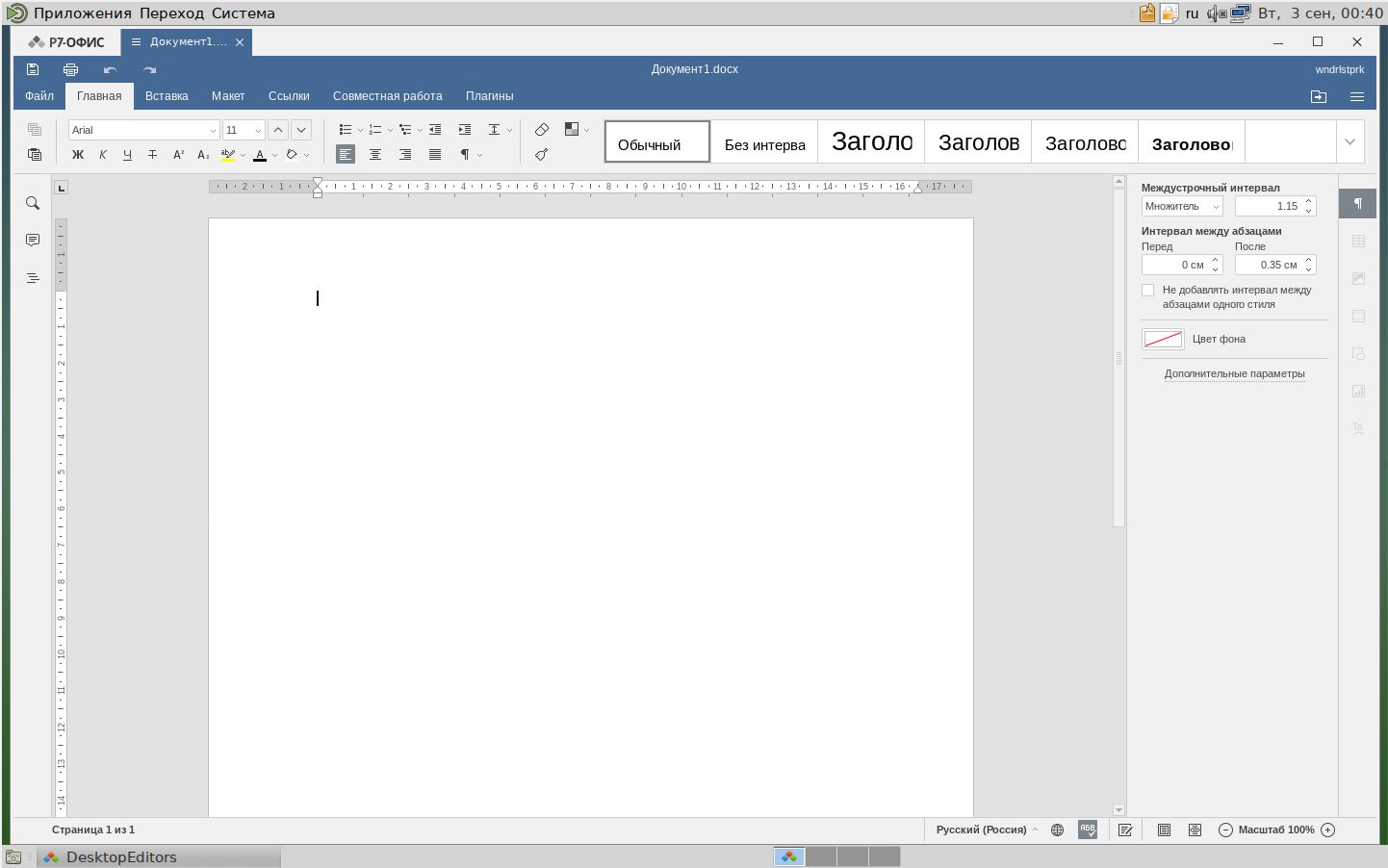
If you have ever used the Latvian cloud product OnlyOffice, you will immediately recognize it. The development center is located in Russia, but what’s interesting is that under the name OnlyOffice the editors are free and in general the source code is open, and for the Russian customer under the name P7-office they already go for money. Import substitution, after all!
Okay, let's move on. The Zircon Office site generally remained in the early nineties.

There are no demos, no references to the partner. Only Moscow phone. Apparently, this is such a closed and secret product that even through a partner cannot be tested. Leave them to enjoy their super secret.
Next up is AlterOffice . The site of Almi Partner, the manufacturer of this office suite, looks concise: minimum information about the program, a barely noticeable download button and company details. Everything looks a little strange: unlike other solutions, it is impossible to understand here how the editions differ from each other, neither of which comes for free, but what kind of money. Well, if there is a button, then try to download the distribution.
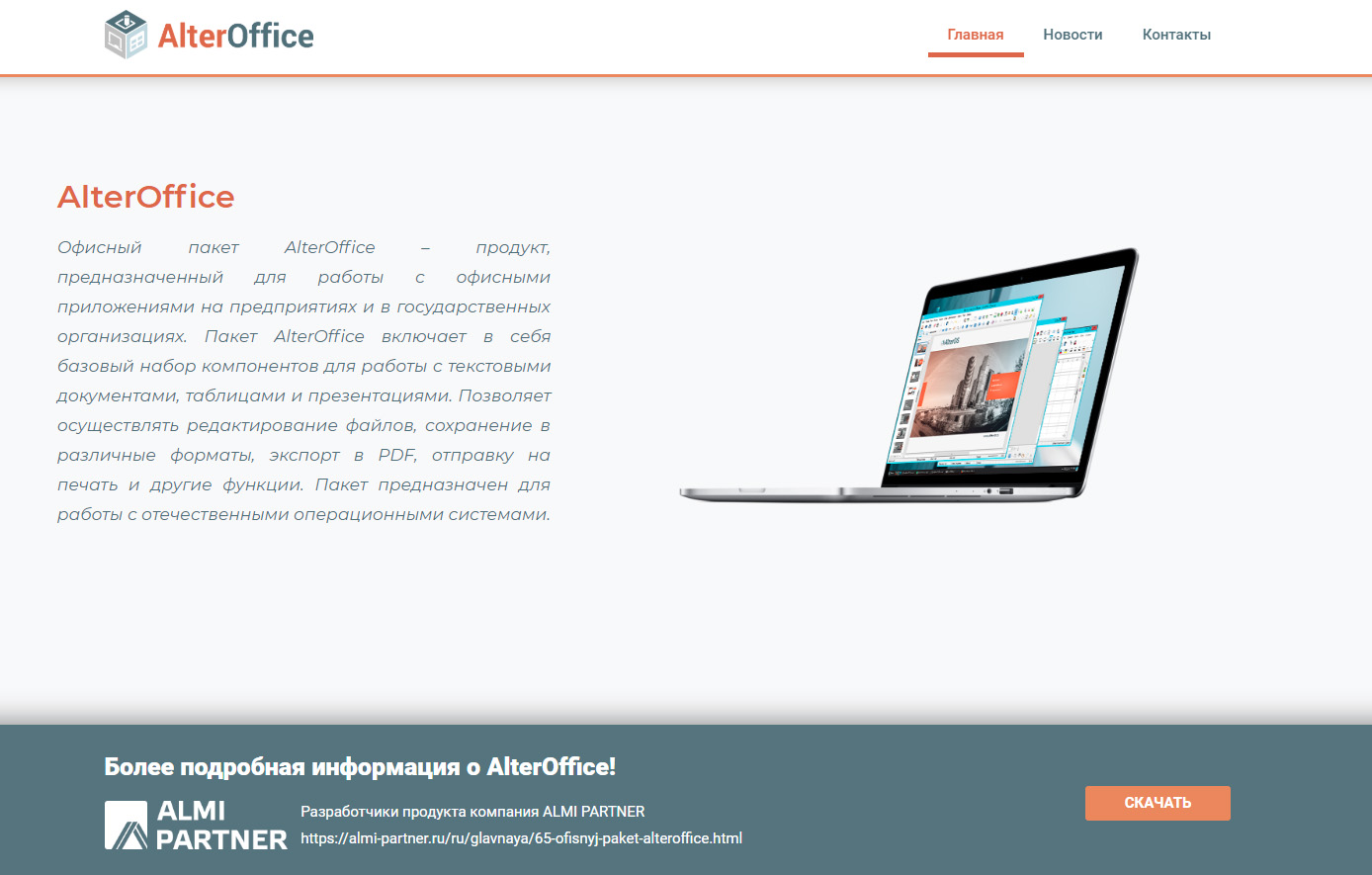
Oddity No. 1: there is a “download” button, but the distribution kit cannot be obtained! It turned out that you can only download a description of the characteristics of the product .
The whole document is a huge table. We learn from it that AlterOffice has a version for Windows and for Linux.

While studying the page of the site and trying to download the distribution, I found installation instructions.
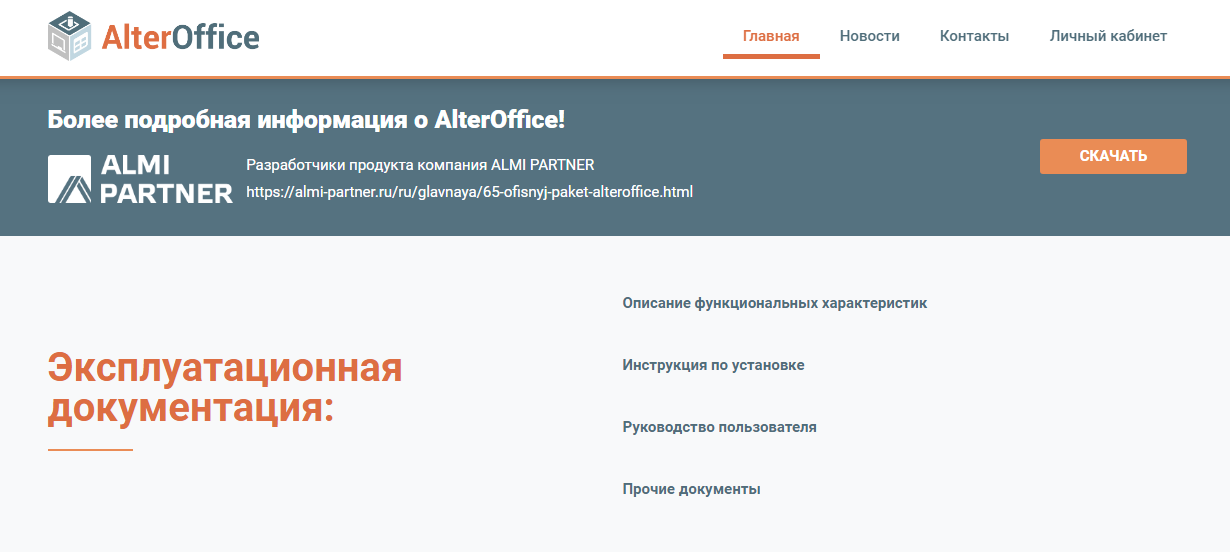
A PDF file is downloaded from the link, from which we learn, for example, how to install the distribution kit on a Windows system, but there is not a word about where to get it.
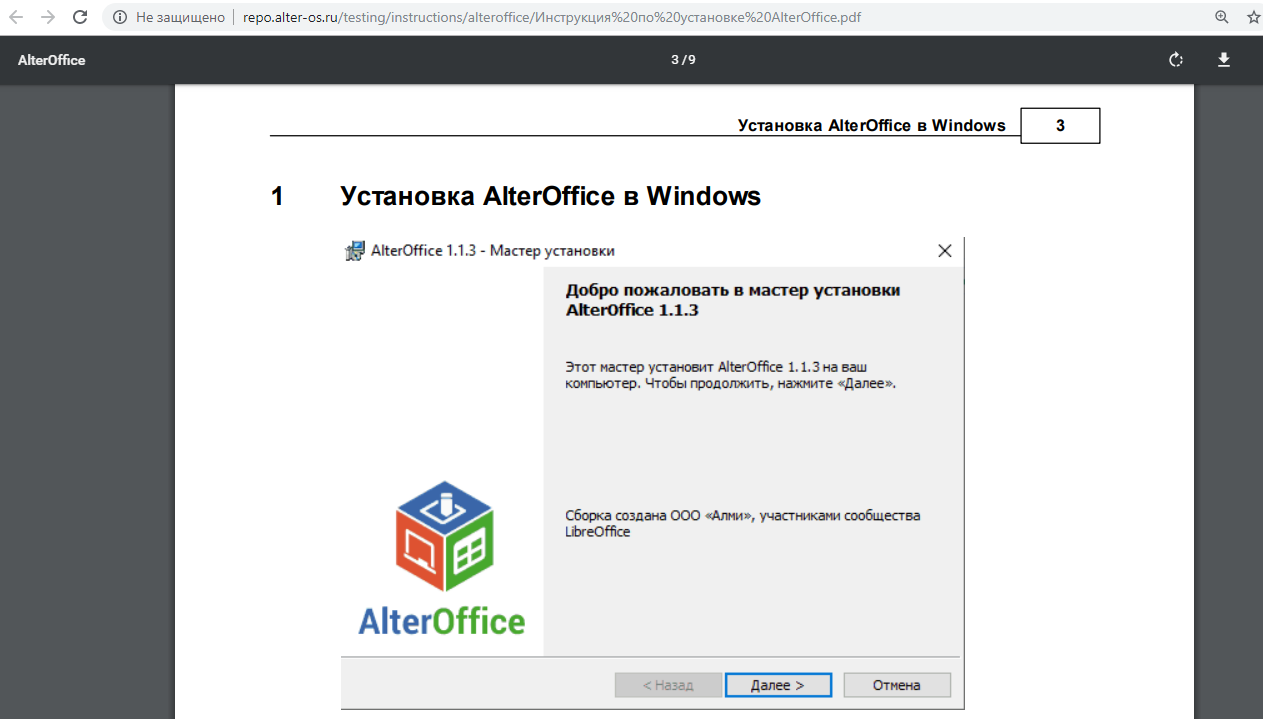
Scroll down and see clear instructions for installing a Linux distribution. We will use it.

We see the link, see what is laid out there:
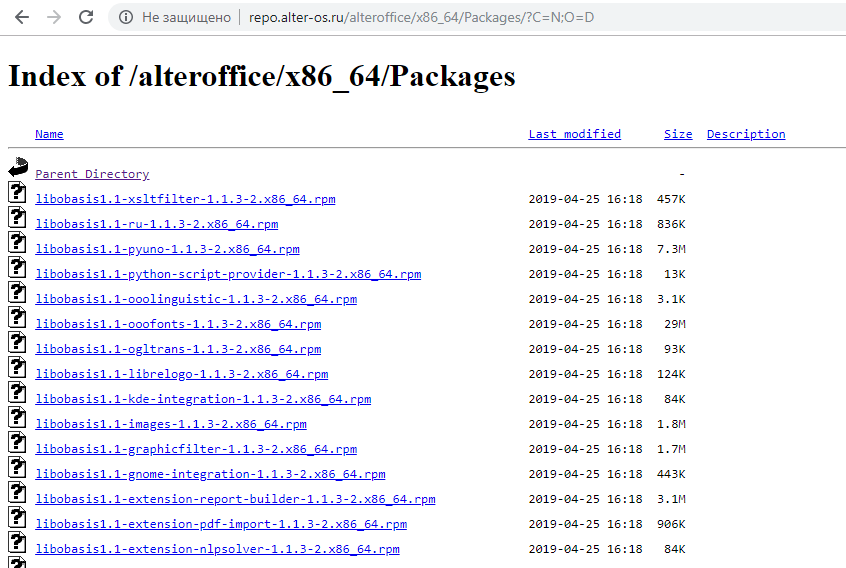
Yeah, and here is the distribution, let's install it soon!

After installation, we see the following picture: the package was installed, though with errors. Yes, the Altre 8 system installs the LibreOffice office suite by default, therefore it is also on the menu.

Launch the AlterOffice program.
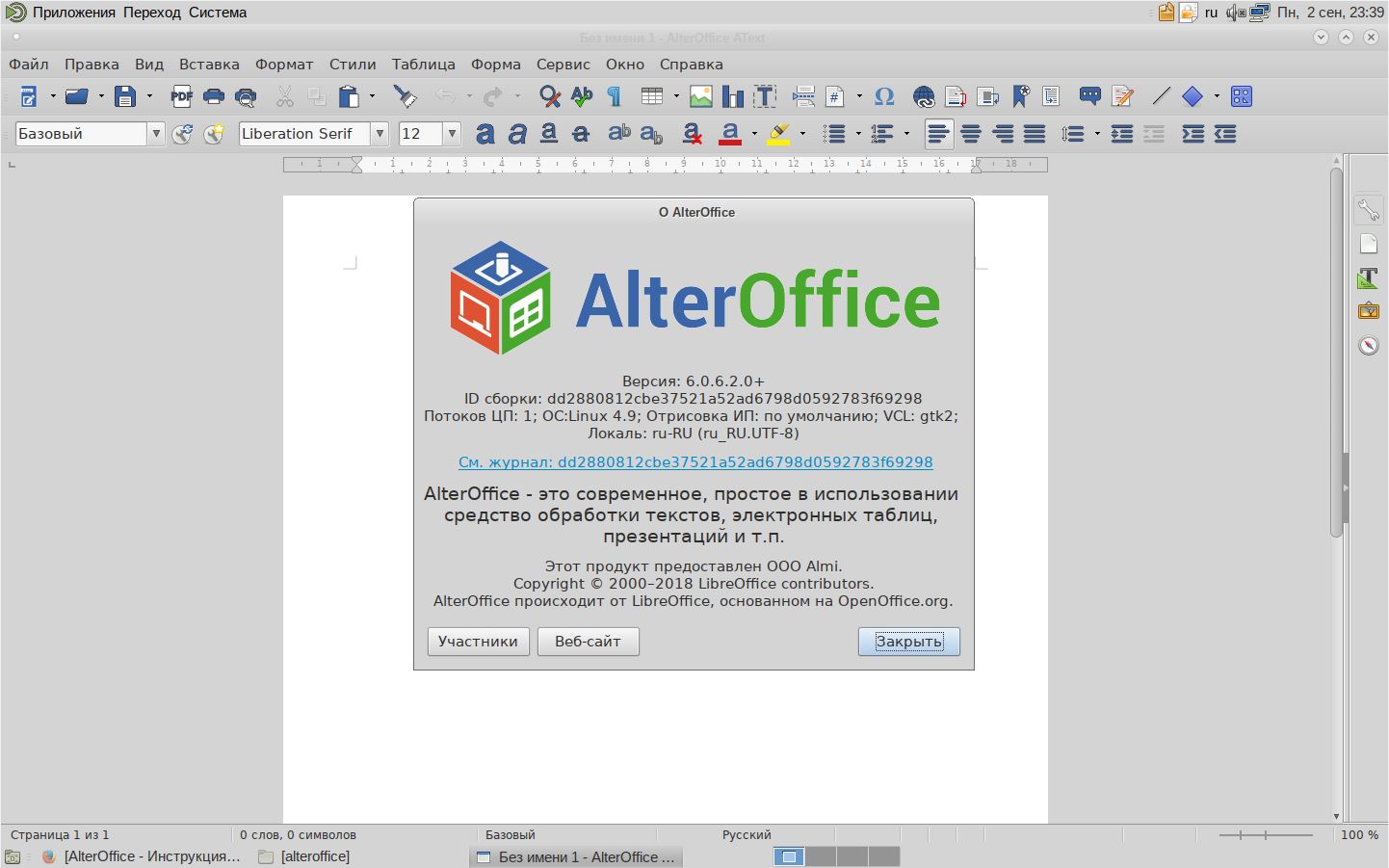
Strangeness No. 2: Hmm! AlterOffice 1.1 is the usual LibreOffice 6.0.6.2, but with a different logo. Let's start the source and compare it visually!
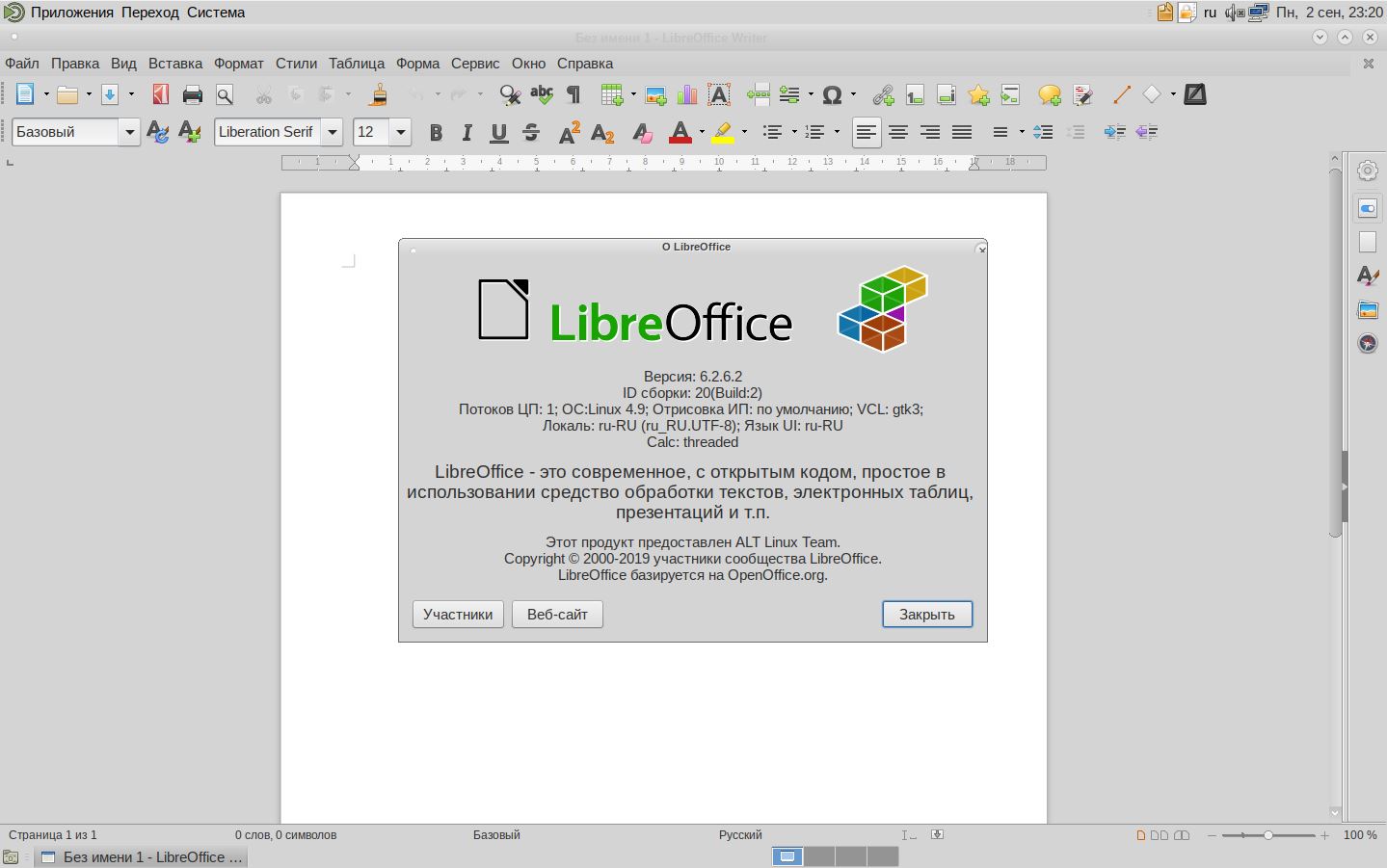
In the Alt 8 system, the LibreOffice distribution is a little newer, but the similarity of the programs is noticeable with the naked eye. As they say, find ten differences - they are only in the logo and icons that the libra changes in each version.
Back to the distribution. So, at first glance - a set of installation files, it is a pity that not one package, but oh well.
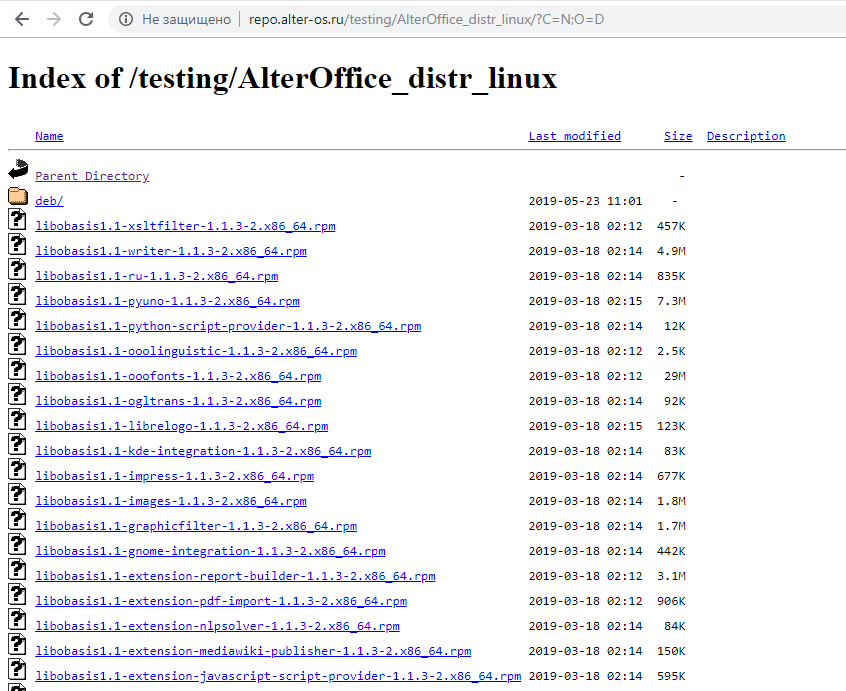
Stop, what is it? Module from LibreOffice?

So, it becomes more interesting. Let's download the LibreOffice distribution and compare the files from the file manager. I use Double Commander, I like it more than the classic blue Midnight Commander.
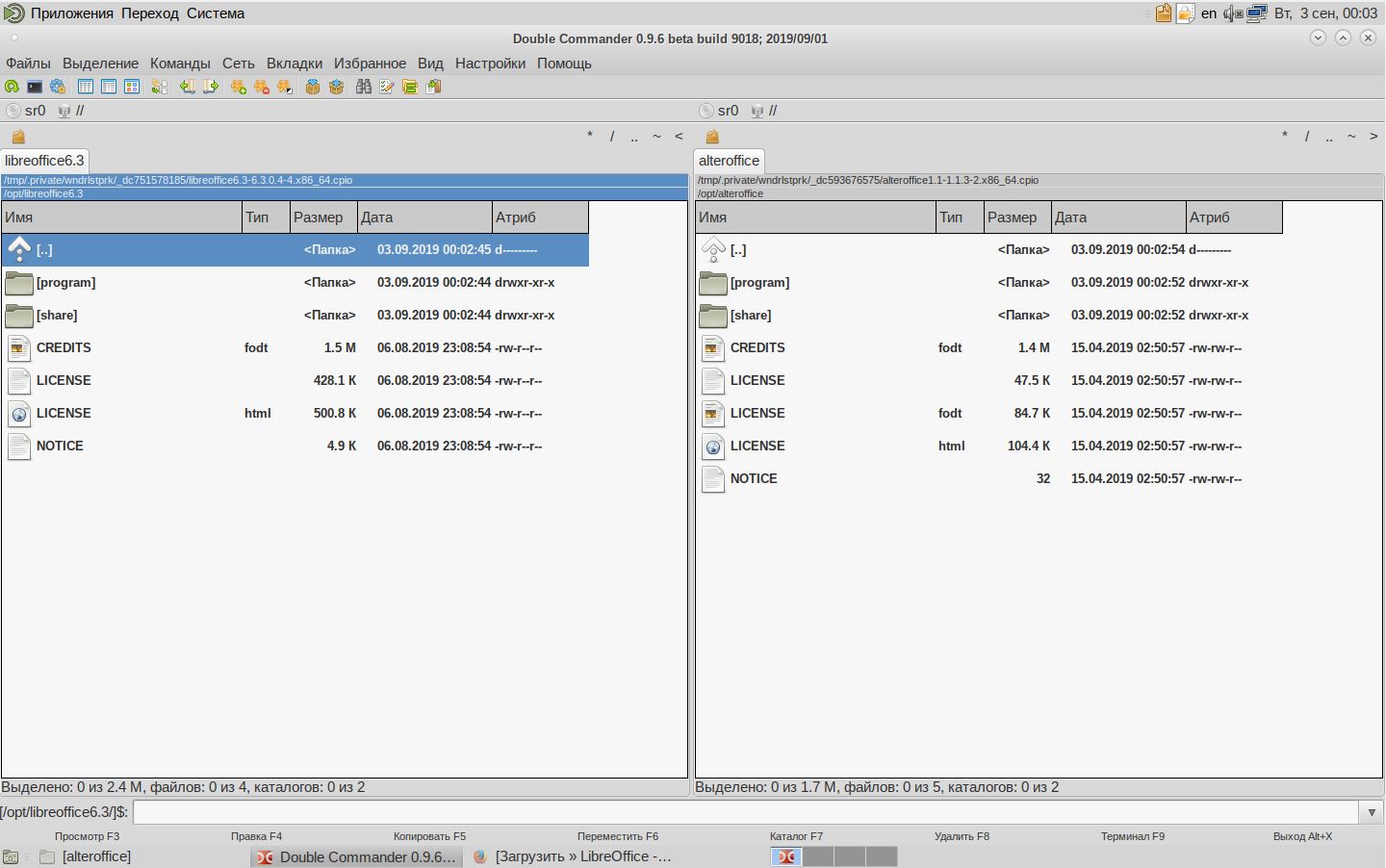
Amazing The folder structure and file names are the same. Let's look at the contents of a NOTICE file, for example. It contains information on the copyright of the developers of certain modules that are used in the software package. The LibreOffice distribution file contains a lot of information, while the file from the AlterOffice package contains only one text line.
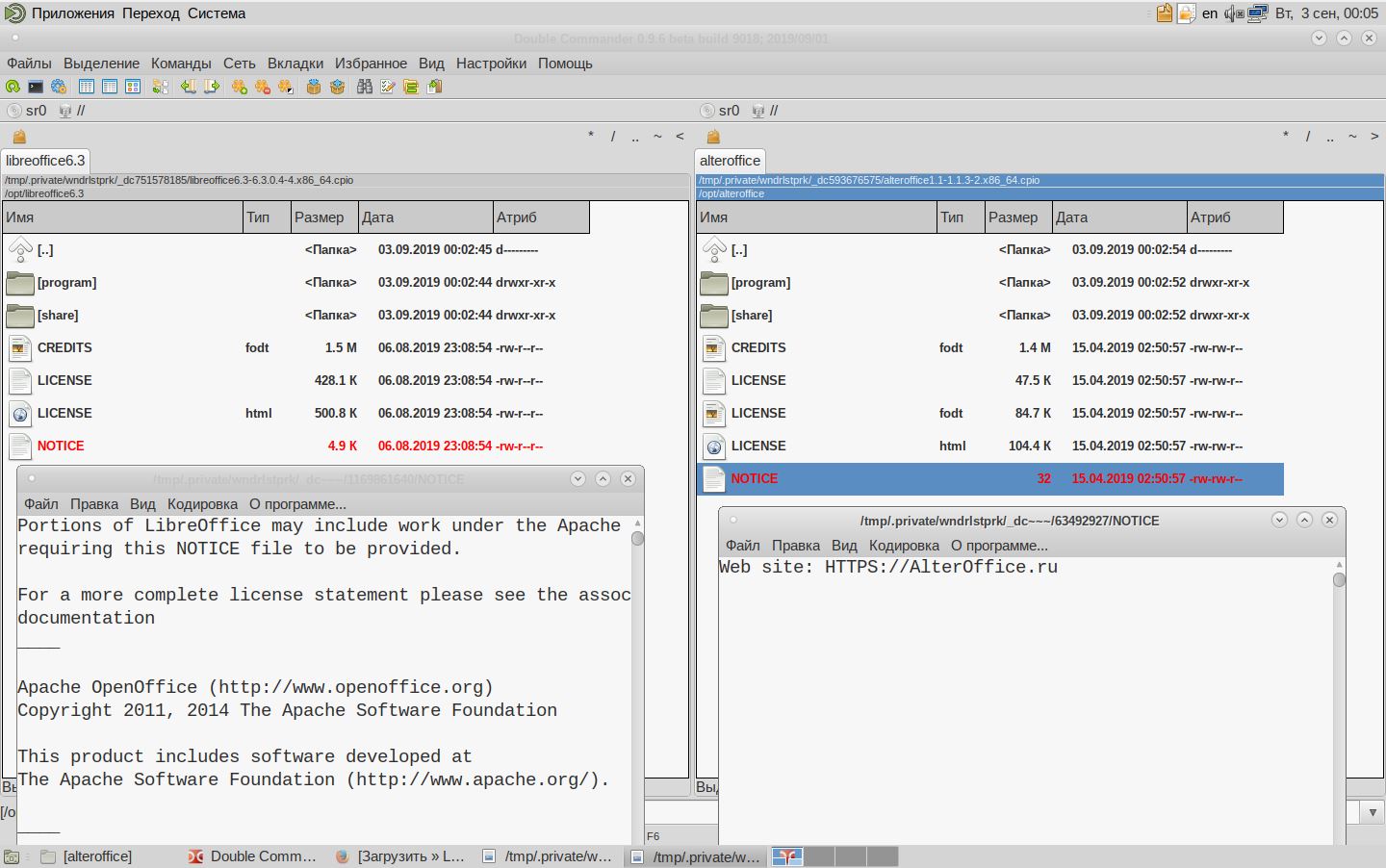
Now let's see the LICENSE file - a file with the text of the license agreement:
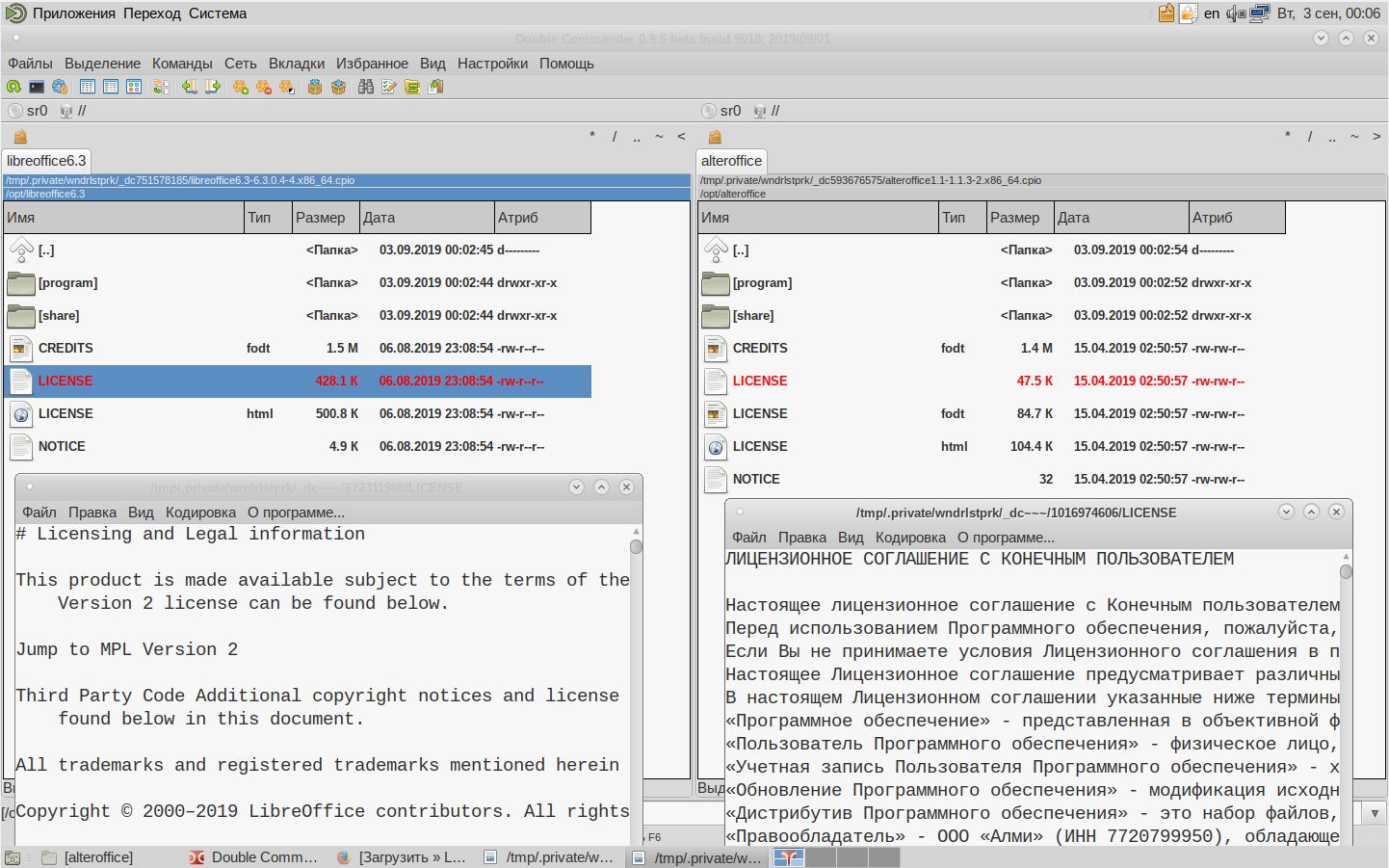
Let's move on to the CREDITS.FODT file, it directly tells us that both distributions are LibreOffice!
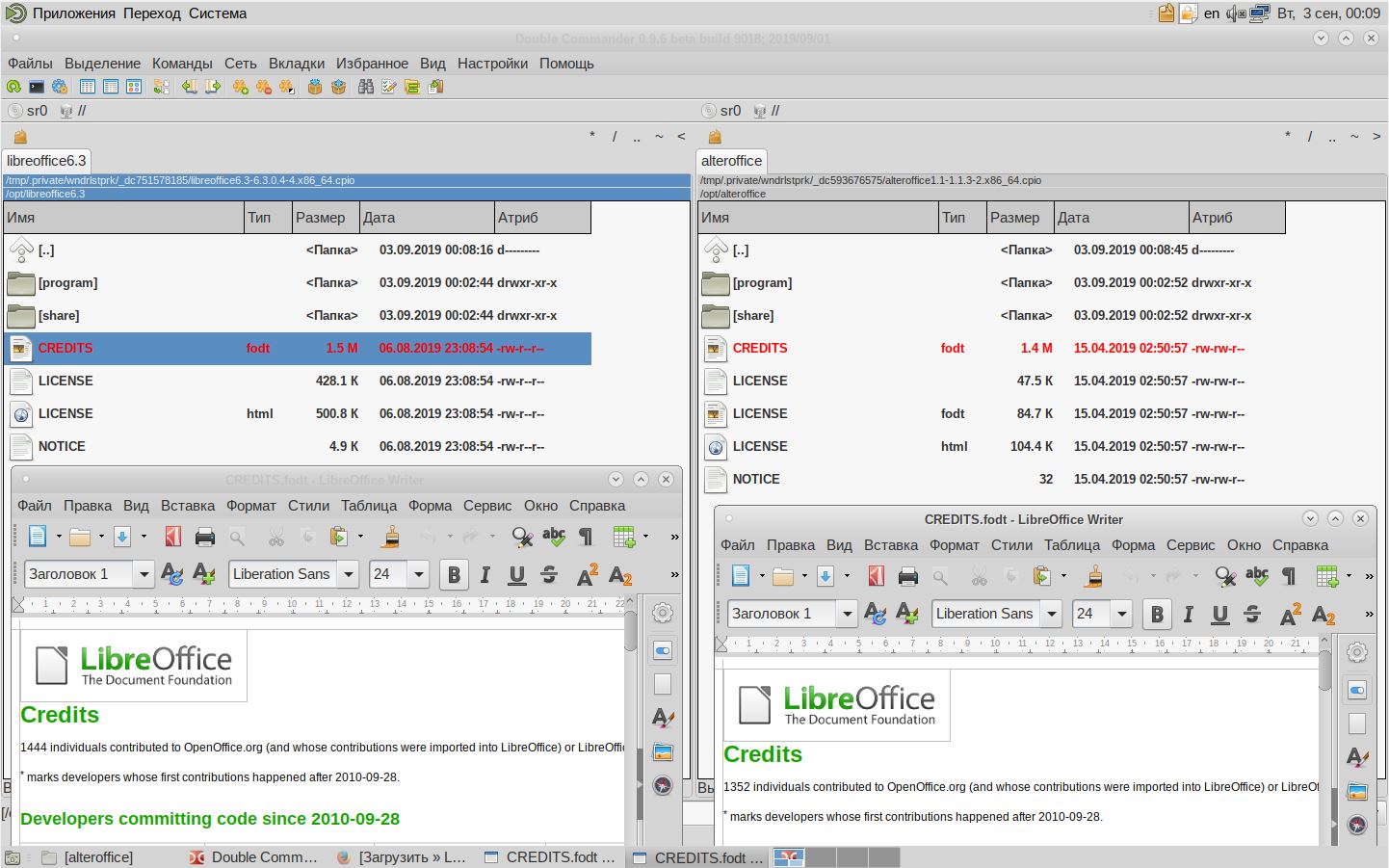
In the list of 1444 developers, these are the people who create and develop the LibreOffice project. The project is international, and the list is mostly foreigners. There is no mention of either Almi Partner, AlterOffice, or anything like that.
All this is strange, very strange. Go to the Program folder and compare the list of files. At first glance, there is a difference. Stop! Not only the file names match, but their size! Only image files differ - the logos of the programs are different.
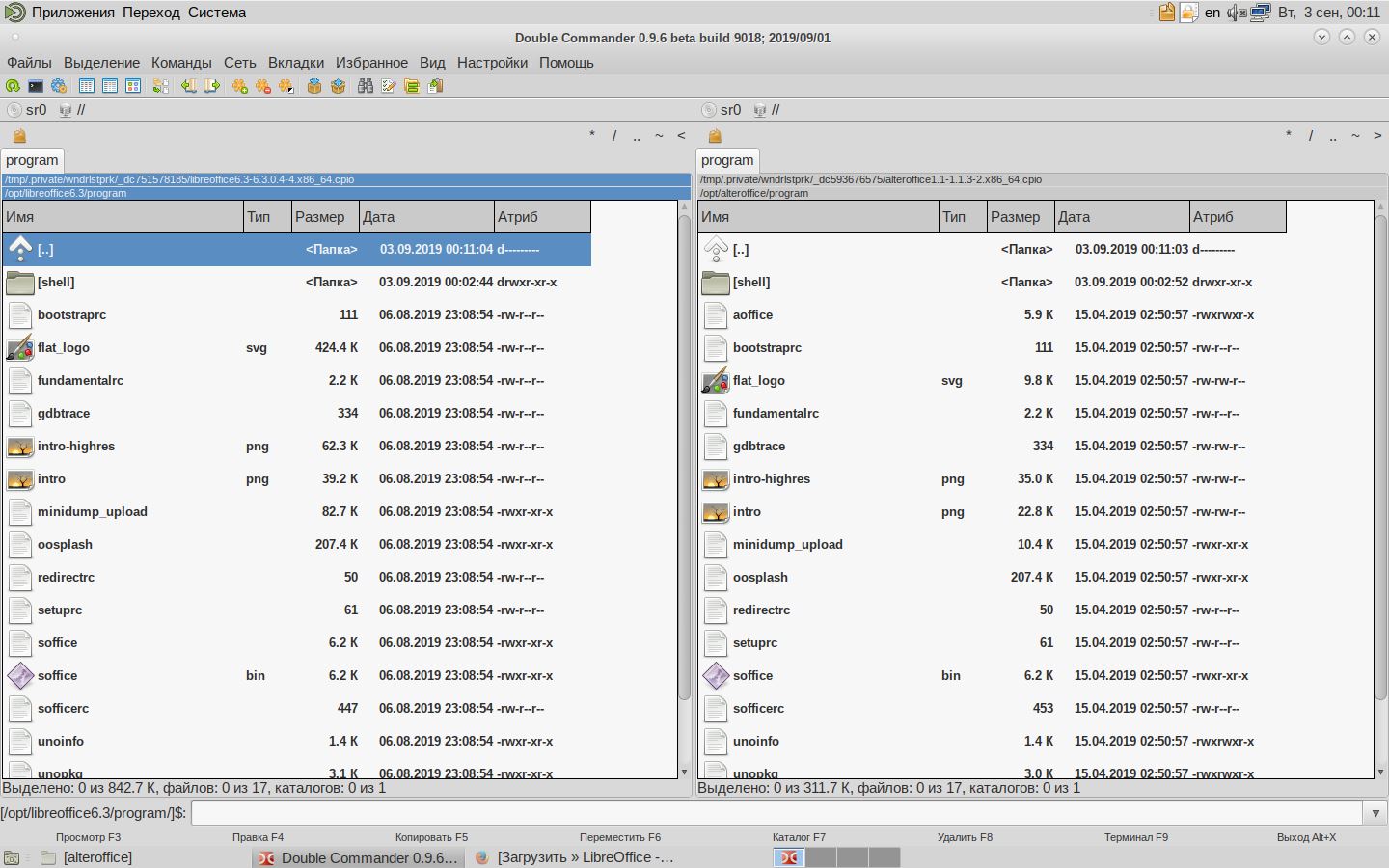
Oddity 3: Let's look at files with matching names and the same size. For example, to a UNOINFO file. Hm! Yes, it's the same thing! Can not be!

Please note: this file explicitly states that the file is part of the LibreOffice project, and that the source code is licensed under the Mozilla Public License 2.0.
Here I was finally imbued with what we actually have “domestic software”. They took someone else’s development, clipped their logo and shoved it into the Registry. Ingenious!
It's no secret that LibreOffice is free software. The package is free for the user, and you can do almost anything with him: use it yourself, distribute, promote, train him, etc. You can even change the source files, make your own version of the product based on it, and earn support.
In “Almi Partner”, it seems, they darted - since software is free, then you can take it for yourself. Indeed, the Mozilla Public License allows such handling of STRs. It only requires the authors to be indicated, but all rights to the program in any situation remain with its creator.
And, in theory, one cannot get into such software: Government Decision No. 1236 expressly requires that all rights belong to a Russian legal entity or individual. Proof:
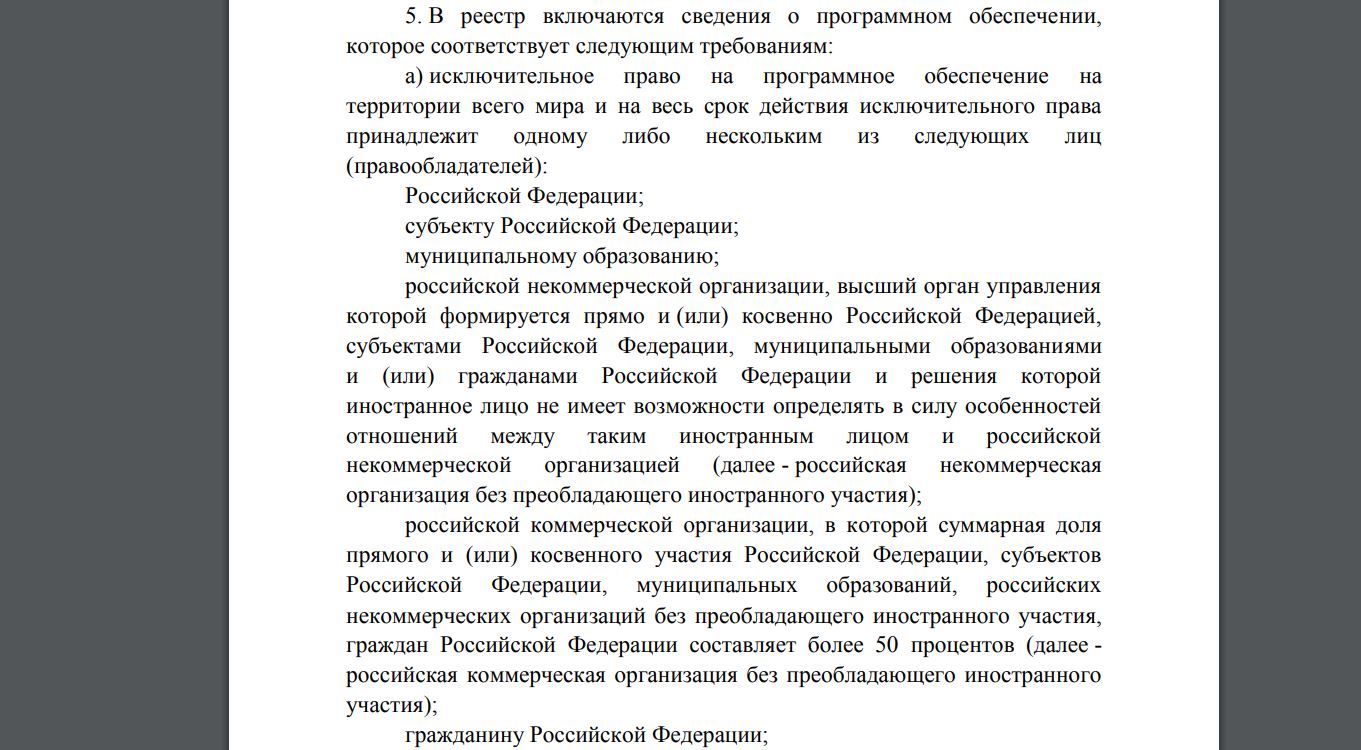
But in fact - it was possible to shove into the registry this engineering miracle. Moreover, it also turns out that the exclusive rights to the LibreOffice open source software belong to Almi Partner and to a certain R. Horanov, and not to one and a half thousand developers of The Document Foundation community.
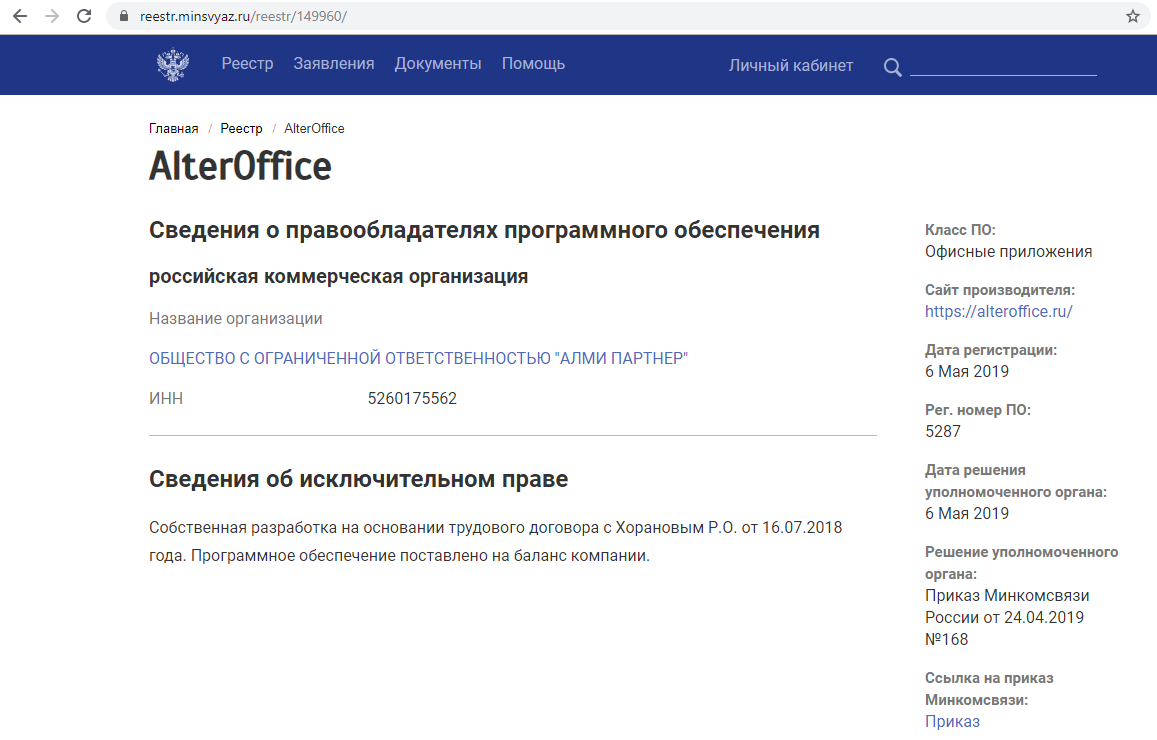
Such a straightforward investigation can be carried out by anyone. Obviously, AlterOffice is not a unique domestic development, but a converted clone of the LibreOffice open source software. In distributions, almost everything coincides: the differences lie only in the program logos and its name.
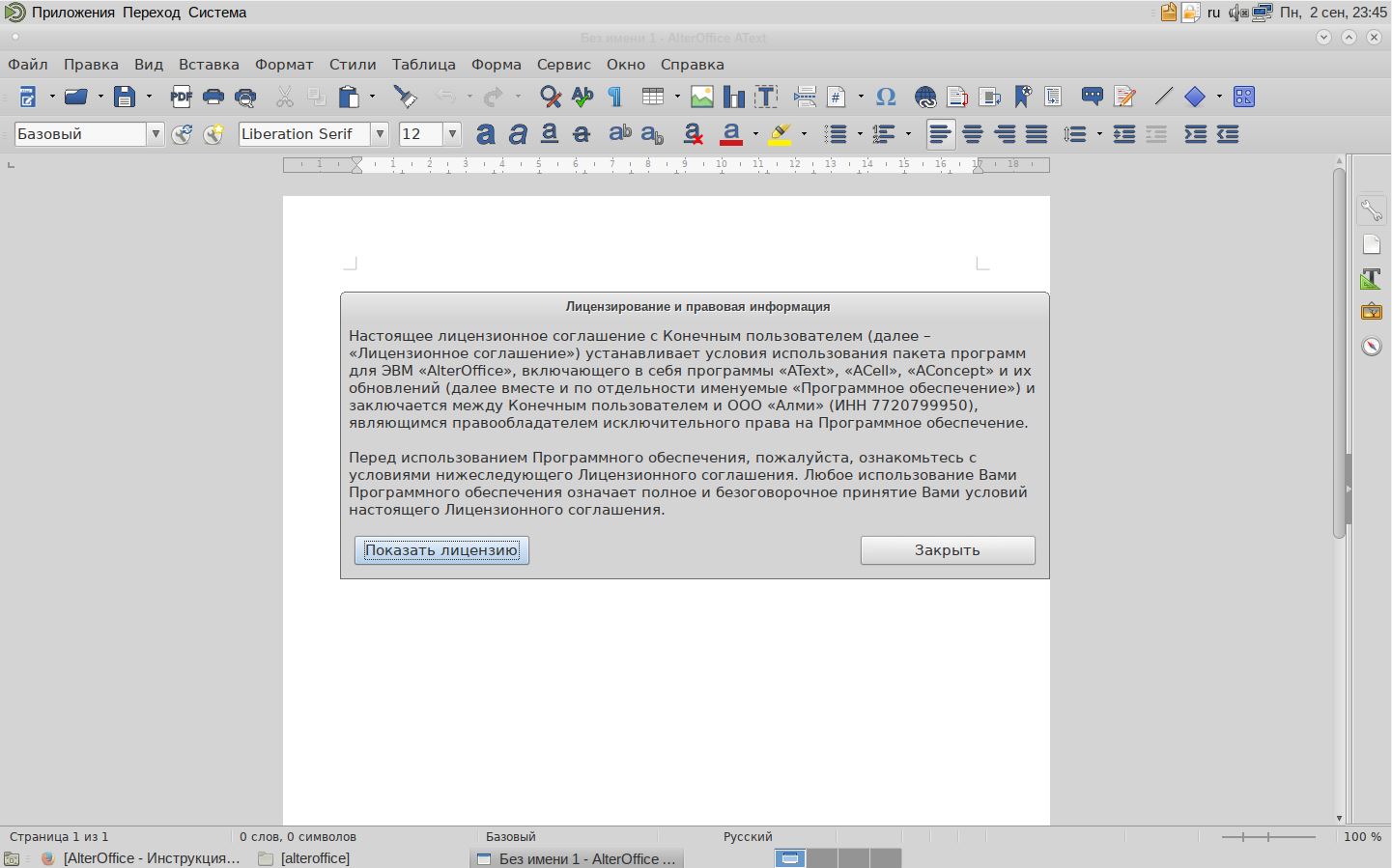
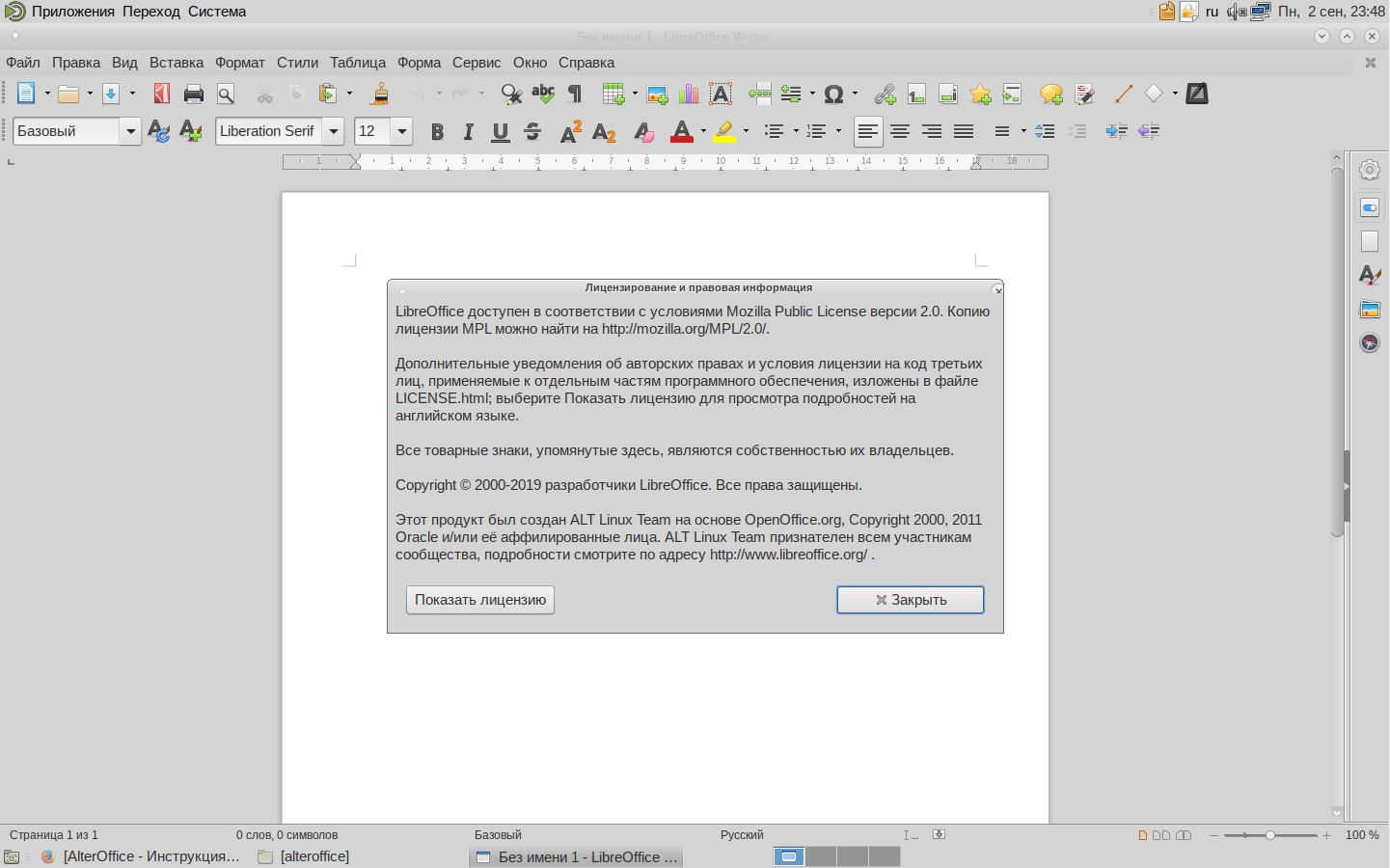
I wonder how the Ministry of Digital Development, Telecommunications and Mass Media missed this point and AlterOffice got into the Register? It turns out that while the Ministry of Transport and Public Administration pours into our ears about the importance of import substitution and requires the implementation of the plan, the ministry itself simultaneously admitted to the registry without getting into it.
What is most sad, as a result of such culturally neglected negligence, civil servants who have to purchase "domestic software" will have to answer. There is, for example, the order of the Ministry of Communications No. 305 , which does not recommend buying STR. That is, the purchase of such software may lead to questions from the Investigative Committee and the Prosecutor's Office, which will be interested in why budget funds were spent on free software. Thank you, the Ministry of Communications! We are waiting for hundreds of criminal cases against ordinary people who had to import substitution.
PS: Ten years ago there was a similar story. The hero-programmer was even shown on TV. The saga about the copied OS BolgenOS still wanders around the Internet, I advise you to read it at your leisure .
Habr, hello! I work as a system administrator in one state structure of the Krasnoyarsk Territory. And although this is quite far from the “decision-making center,” the program for the transition to Russian software has come down to us. A couple of weeks ago, the head at a meeting in the regional administration was made clear that it was no longer possible to purchase foreign software.
We have only 35 computers and they are mainly used as typewriters. Therefore, I had to study the options for the Russian operating system and office suites. In the register of domestic software today there are more than 5700 different programs and there are big problems with the classification there. Only in the section "Operating Systems" there are about 50 solutions, and there are no more than a dozen real OSs there. The rest is various utilities, plug-ins for payment terminals and other similar software. With office suites, it’s even more interesting: the list contains more than 200 solutions. And these are not only large office software packages, but also document management systems, highly specialized applications and many “spare parts” for them.
The Ministry of Communications, you yourself are not confused in it?
We study office packages from the Registry
We decided on the operating system relatively quickly - we chose Alt 8 . It is easy to learn, and it works stably. It was more difficult with office suites, I spent more than an hour and found only 4 products in the Registry:
Let's go in order. MyOffice: the Buy button is right in the header, but it’s impossible to buy directly from the site. Instead, they are asked to send a request to a partner. There are no demos, you cannot try and evaluate a product without communication with partners. I sent the application, but when they answer and whether they answer, it’s not at all clear.

Move on. P7-Office website : the Download button is right in the header:

But if you click it, then the download does not happen - instead, we again see the request form.

Okay, we send the application, and we have links to download the image.

Download, install, run.


If you have ever used the Latvian cloud product OnlyOffice, you will immediately recognize it. The development center is located in Russia, but what’s interesting is that under the name OnlyOffice the editors are free and in general the source code is open, and for the Russian customer under the name P7-office they already go for money. Import substitution, after all!
Okay, let's move on. The Zircon Office site generally remained in the early nineties.

There are no demos, no references to the partner. Only Moscow phone. Apparently, this is such a closed and secret product that even through a partner cannot be tested. Leave them to enjoy their super secret.
Next up is AlterOffice . The site of Almi Partner, the manufacturer of this office suite, looks concise: minimum information about the program, a barely noticeable download button and company details. Everything looks a little strange: unlike other solutions, it is impossible to understand here how the editions differ from each other, neither of which comes for free, but what kind of money. Well, if there is a button, then try to download the distribution.

Oddity No. 1: there is a “download” button, but the distribution kit cannot be obtained! It turned out that you can only download a description of the characteristics of the product .
The whole document is a huge table. We learn from it that AlterOffice has a version for Windows and for Linux.

While studying the page of the site and trying to download the distribution, I found installation instructions.

A PDF file is downloaded from the link, from which we learn, for example, how to install the distribution kit on a Windows system, but there is not a word about where to get it.

Scroll down and see clear instructions for installing a Linux distribution. We will use it.

We see the link, see what is laid out there:

Yeah, and here is the distribution, let's install it soon!

After installation, we see the following picture: the package was installed, though with errors. Yes, the Altre 8 system installs the LibreOffice office suite by default, therefore it is also on the menu.

Launch the AlterOffice program.

Strangeness No. 2: Hmm! AlterOffice 1.1 is the usual LibreOffice 6.0.6.2, but with a different logo. Let's start the source and compare it visually!

In the Alt 8 system, the LibreOffice distribution is a little newer, but the similarity of the programs is noticeable with the naked eye. As they say, find ten differences - they are only in the logo and icons that the libra changes in each version.
Back to the distribution. So, at first glance - a set of installation files, it is a pity that not one package, but oh well.

Stop, what is it? Module from LibreOffice?

So, it becomes more interesting. Let's download the LibreOffice distribution and compare the files from the file manager. I use Double Commander, I like it more than the classic blue Midnight Commander.

Amazing The folder structure and file names are the same. Let's look at the contents of a NOTICE file, for example. It contains information on the copyright of the developers of certain modules that are used in the software package. The LibreOffice distribution file contains a lot of information, while the file from the AlterOffice package contains only one text line.

Now let's see the LICENSE file - a file with the text of the license agreement:

Let's move on to the CREDITS.FODT file, it directly tells us that both distributions are LibreOffice!

In the list of 1444 developers, these are the people who create and develop the LibreOffice project. The project is international, and the list is mostly foreigners. There is no mention of either Almi Partner, AlterOffice, or anything like that.
All this is strange, very strange. Go to the Program folder and compare the list of files. At first glance, there is a difference. Stop! Not only the file names match, but their size! Only image files differ - the logos of the programs are different.

Oddity 3: Let's look at files with matching names and the same size. For example, to a UNOINFO file. Hm! Yes, it's the same thing! Can not be!

Please note: this file explicitly states that the file is part of the LibreOffice project, and that the source code is licensed under the Mozilla Public License 2.0.
Here I was finally imbued with what we actually have “domestic software”. They took someone else’s development, clipped their logo and shoved it into the Registry. Ingenious!
It's no secret that LibreOffice is free software. The package is free for the user, and you can do almost anything with him: use it yourself, distribute, promote, train him, etc. You can even change the source files, make your own version of the product based on it, and earn support.
In “Almi Partner”, it seems, they darted - since software is free, then you can take it for yourself. Indeed, the Mozilla Public License allows such handling of STRs. It only requires the authors to be indicated, but all rights to the program in any situation remain with its creator.
And, in theory, one cannot get into such software: Government Decision No. 1236 expressly requires that all rights belong to a Russian legal entity or individual. Proof:

But in fact - it was possible to shove into the registry this engineering miracle. Moreover, it also turns out that the exclusive rights to the LibreOffice open source software belong to Almi Partner and to a certain R. Horanov, and not to one and a half thousand developers of The Document Foundation community.

Sad conclusion
Such a straightforward investigation can be carried out by anyone. Obviously, AlterOffice is not a unique domestic development, but a converted clone of the LibreOffice open source software. In distributions, almost everything coincides: the differences lie only in the program logos and its name.


I wonder how the Ministry of Digital Development, Telecommunications and Mass Media missed this point and AlterOffice got into the Register? It turns out that while the Ministry of Transport and Public Administration pours into our ears about the importance of import substitution and requires the implementation of the plan, the ministry itself simultaneously admitted to the registry without getting into it.
What is most sad, as a result of such culturally neglected negligence, civil servants who have to purchase "domestic software" will have to answer. There is, for example, the order of the Ministry of Communications No. 305 , which does not recommend buying STR. That is, the purchase of such software may lead to questions from the Investigative Committee and the Prosecutor's Office, which will be interested in why budget funds were spent on free software. Thank you, the Ministry of Communications! We are waiting for hundreds of criminal cases against ordinary people who had to import substitution.
PS: Ten years ago there was a similar story. The hero-programmer was even shown on TV. The saga about the copied OS BolgenOS still wanders around the Internet, I advise you to read it at your leisure .
All Articles